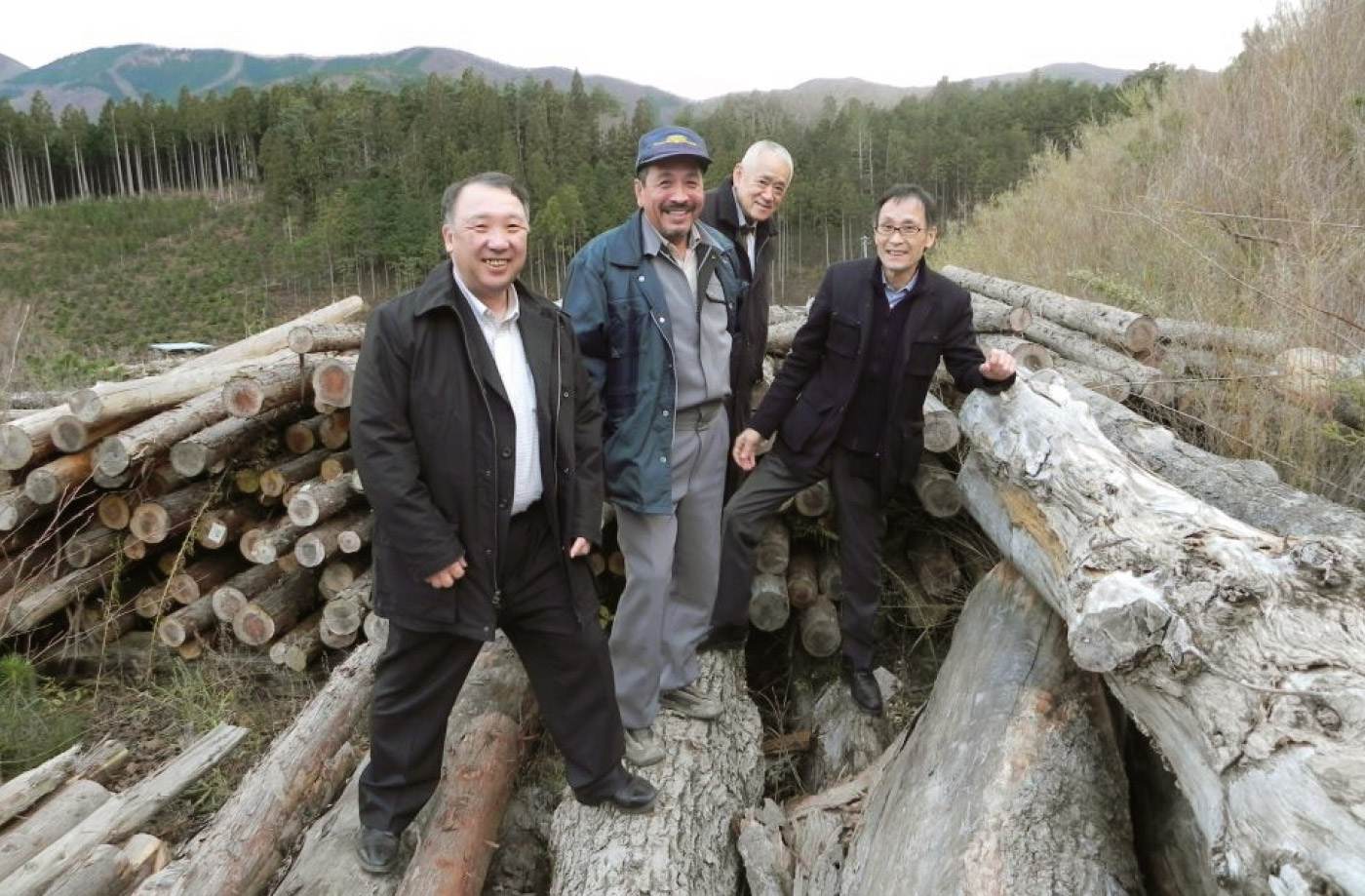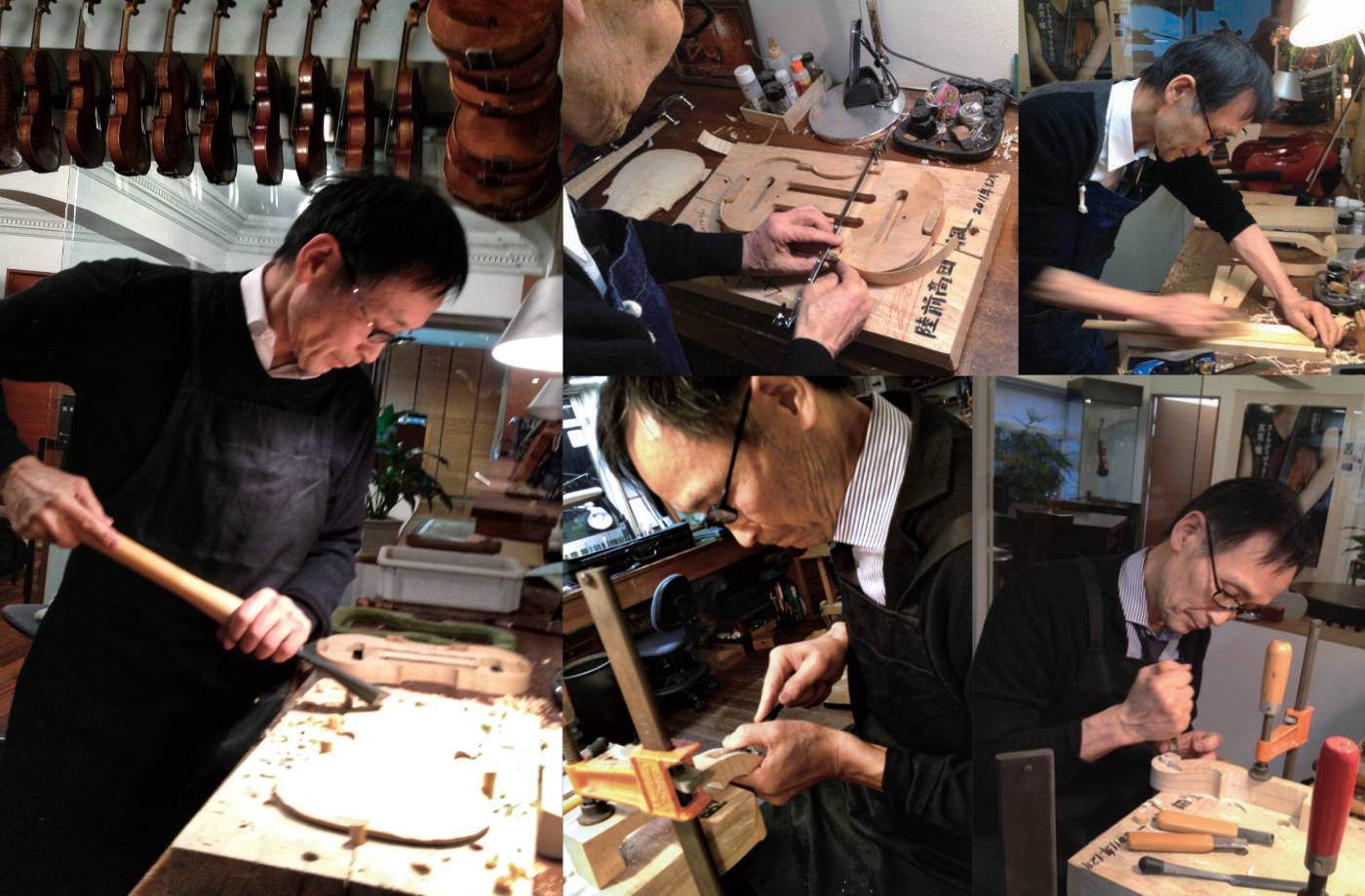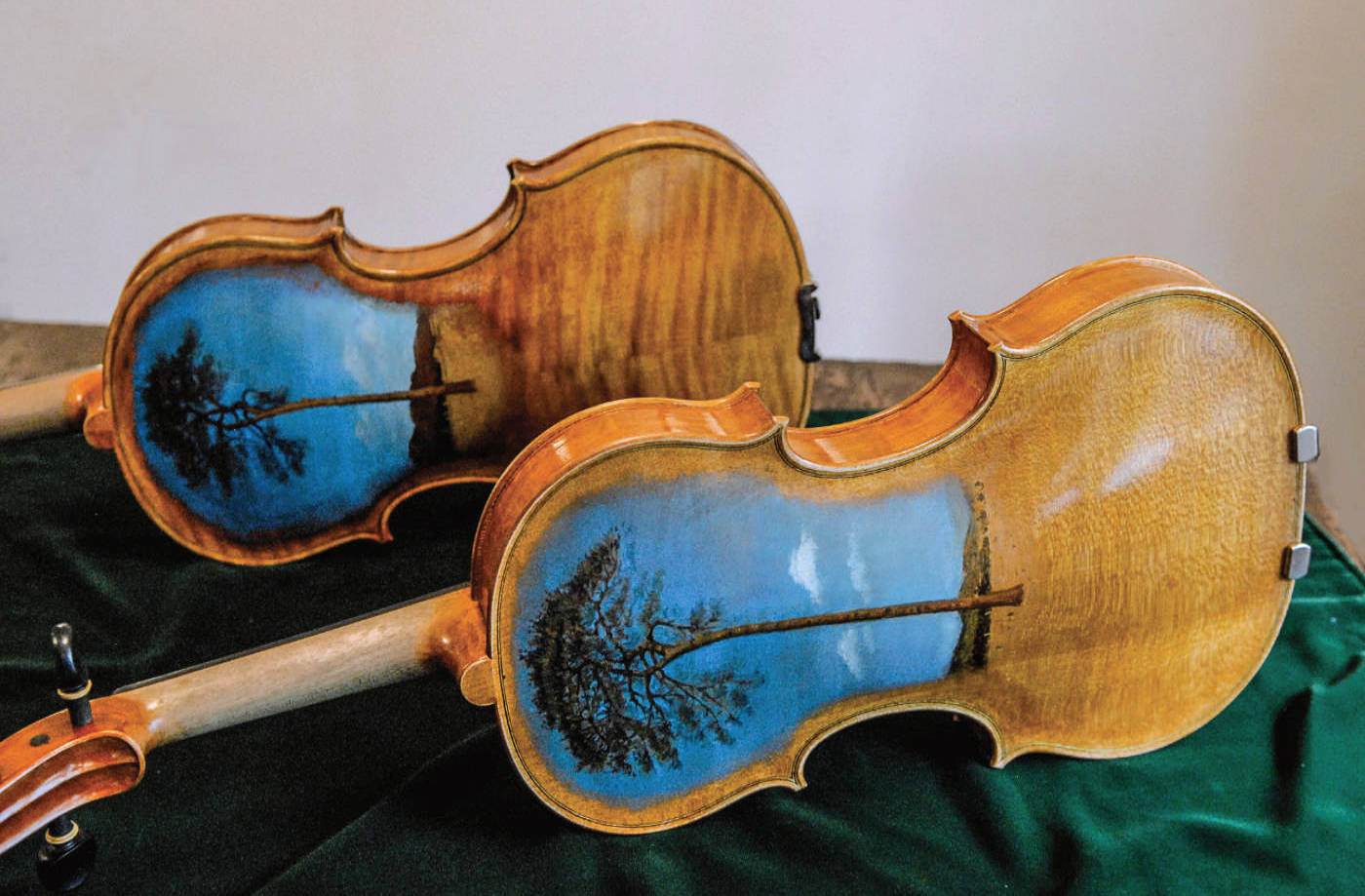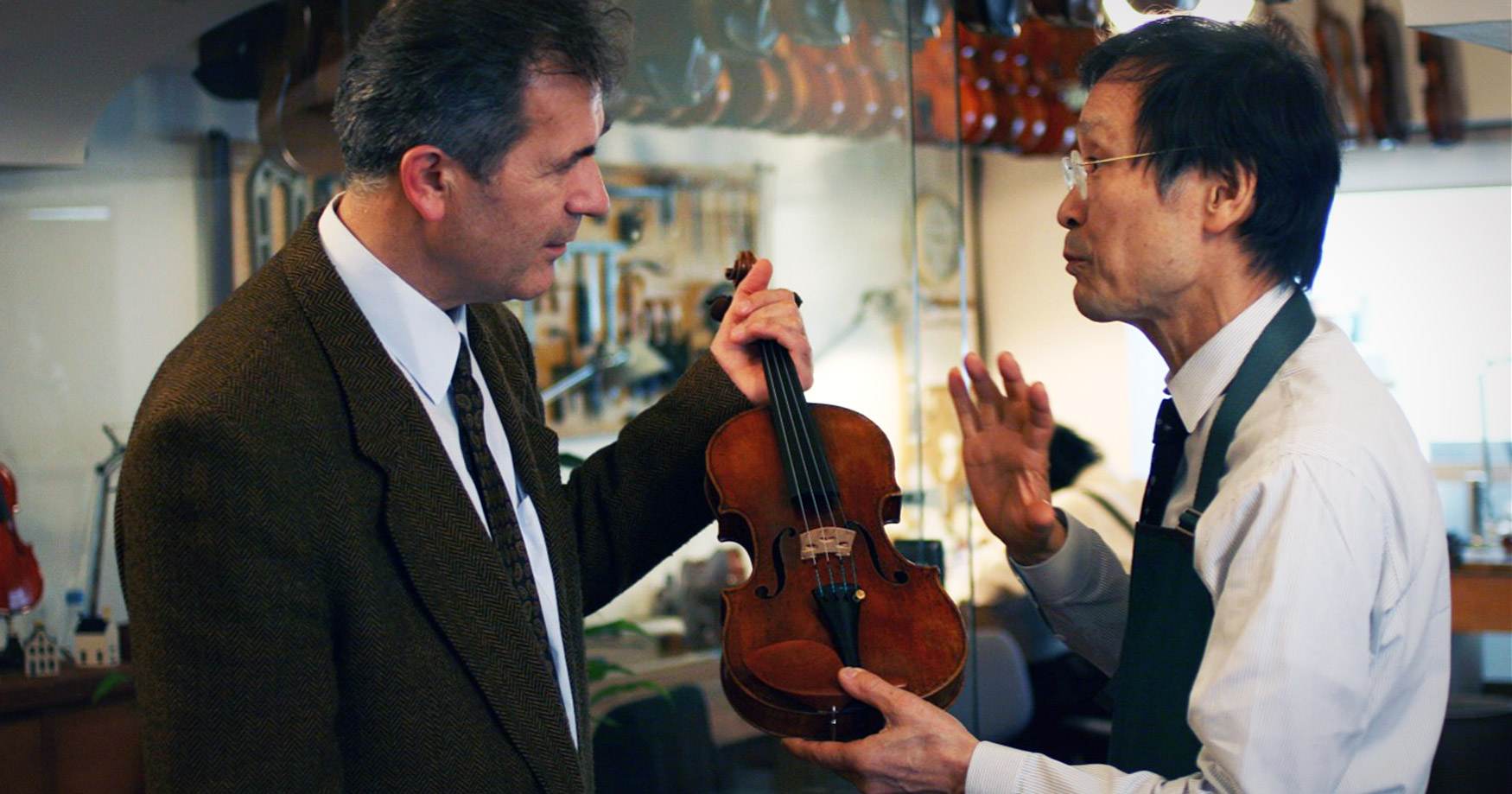On March 11, 2011, areas of coastal Japan were pummeled by a 9.1 magnitude earthquake which then birthed a tsunami that traveled up to six miles inland and killed nearly 16,000 people. Tree limbs, building wreckage, and indiscernible destruction lay in its wake.

Muneyuki visited suffered Tohoku to look for raw material
After the storm, Muneyuki Nakazawa stepped in. The 79-year-old violin craftsman explored the debris and took home what he could use to create the Tsunami Violin, one of seven instruments Nakazawa created from the wreckage. The front and rear surfaces of the violin are made of driftwood and beams of homes destroyed in the disaster. Inside the violin, the soundpost is made of wood from the “kisekino ipponmatsu” or “miraculous lone pine tree,” the lone tree that was left standing on the town’s coastline after the storm.

Making “Tsunami” Violin/Muneyuki Nakazawa
The instrument is now touring the world as part of the Classic for Japan Foundation Tsunami Violin project, which aims to spread a message of peace, unity, education, and conservation to listeners across nations and boundaries.

Two of seven Tsunami Violins created by Muneyuki Nakazawa from the wreckage left behind after a tsunami.
In 2019, Nakazawa and prominent Croatian violinist Goran Končar partnered with PARMA, with a collective aim to bring the Tsunami Violin Project to Carnegie Hall. This collaboration with PARMA aims to draw further attention to the instrument and its underlying message through recording works for violin and orchestra.
The recording side of this collaboration with PARMA includes an album that reaches across continental boundaries, furthering the message of peace and unity. The album will include works for violin and orchestra, from Croatian, US, and Japanese composers, performed by Croatian, US, and Japanese soloists.
The Carnegie Hall performance (final date TBA) will feature violinist Kimiko Nakazawa, and more concerts are in the works with orchestras internationally. We also plan to subsequently make efforts towards humanitarian-related outreach and activities relating to this project involving youth and amateur orchestras, according to available possibilities and in accordance with Nippon Violin / Classic for Japan.



